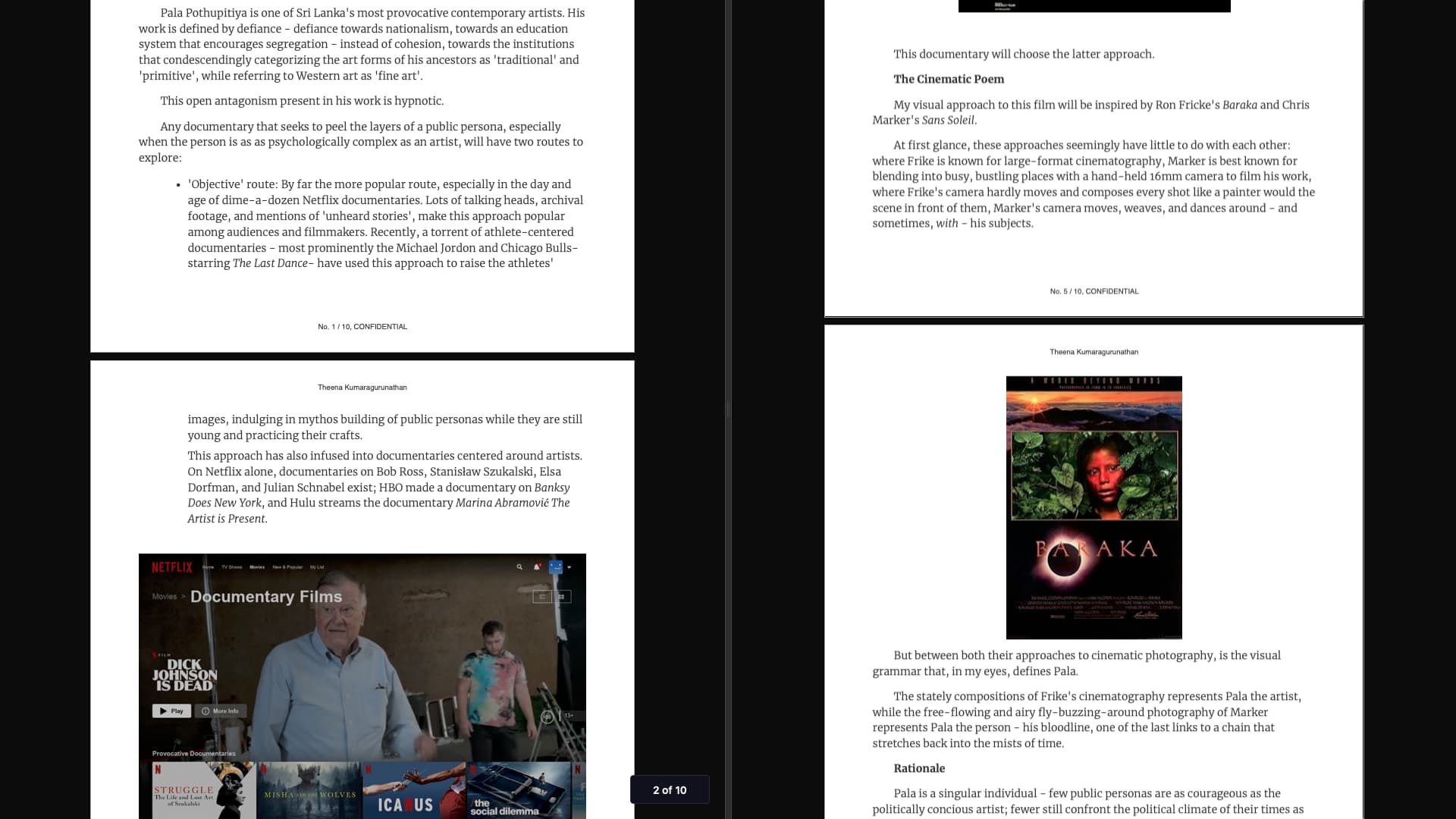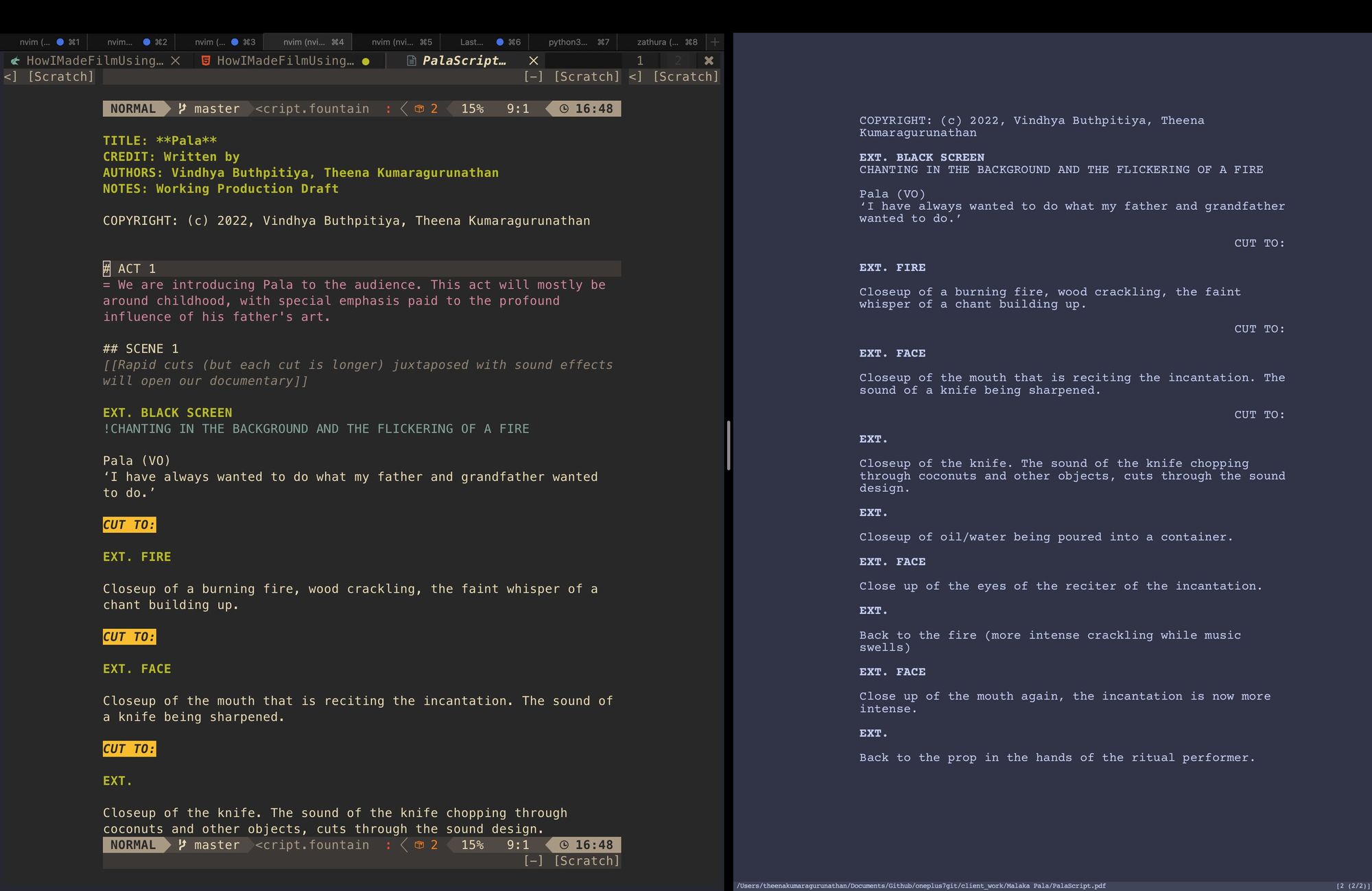Jailtime for Retro Game Console Reviews? Italy’s Copyright Enforcement Sparks Debate
Italian YouTuber raided over handheld review, faces possible jail time.
I was in the midst of 2-year long Linux Experiment when my first feature film was green-lit. How did I make my film using (mostly) FOSS tech?


I fell in love in 2020. The timing couldn't have been more awkward.
The WHO had declared that the first pandemic of our lifetimes was upon us. I had just taken a sabbatical from work, intending to spend the time finishing a Master's, and the follow-up to my debut novel First Utterance.
But writers are a moody bunch. Sometimes our focus is razor sharp and sustained over weeks. Sometimes, we have the attention span of goldfish.
I was in goldfish mode.
I needed something to escape my daily grind: wake up, write for a few hours, get to study, finish assignments for classes, repeat.
Someone, somewhere on the internet mentioned that the pandemic offered the best opportunity for people to experiment with Linux for their daily computing.
Immediately, the goldfish brain's attention was grabbed.
There was a good reason for this:
20 years earlier, I had forgone film school for a Bachelor's in Computer Science.
To my surprise, I found myself enjoying most of the course (until we arrived at Introduction to Programming with Java, causing me to drop out of my undergrad, but that's a whole other story); computer architecture, networking and system administration modules had really piqued my interest, and I found myself at the school lab spending more time on the machines that had Linux installed on them.
The point is there was history between Linux and I.
And in 2020, the timing was just right.
In the years after I dropped out of my Computer Science undergrad, I had ventured well away from the many curiosities that computing kindled within me.
In lieu of film school, I became a novelist.
I moved from IT to Marketing, and spent the better part of 20 years writing ad copy for print, TV, radio, and digital platforms.
I started my own advertising agency.
In those 20 years, we saw social media become synonymous with the internet.
By 2020, I had decided to leave advertising for good, and a large portion of that was how disillusioned I had become with technology, particularly social media, and particularly the callous ways in which social media was harming us, as individuals and societies.
And though I know social media isn't the internet, it was still very hard to uncouple it in my mind. Being in advertising, I also felt like I had played a small role in making social media damningly ubiquitous.
My Year of Linux Desktop kept me sane through the pandemic.
By the time 2022 rolled over, I was daily driving Linux on my laptop. I also had bought myself an old ThinkPad T420, installed Ubuntu Server on it, and began running instances of Plex and NextCloud.
I was comfortable on Linux, having moved almost all my writing work from MS Word and Cloud-based storage to Vim and GitHub.
And that's when I got the call from a producer, greenlighting my first film.
At this point, I had a decision to make. I would be cutting dailies while on set which meant I would need an industry standard Non-Linear Editor (NLE). I was comfortable on Adobe Premiere but knew there was no Linux port. I had already tried Kden Live and a couple of other FOSS alternatives, including Blender (which has a built-in NLE) but was left unsatisfied.
More immediately, I was worried that my writing workflow - which had become completely (Neo)Vim and Git-centric - would be too alien for my co-writer.
At this point, I had to ask myself if Linux was ready for my film work ahead. To answer that, I reminded myself of the following:
I am old enough to have tried Ubuntu Linux way back when they were shipping installation CDs to anyone in the world, for free. Back then, I had a host of hardware problems that I couldn't resolve, and a serious dearth in quality alternatives for my main tool: MS Word.
The Linux of 2020s was vastly different. Installation was a breeze, the help documentation was incredibly exhaustive, Linux YouTube existed making the transition all the more seamless, all my hardware worked flawlessly, and I was ready to abandon MS Word for good.
I have thought this countless times since I first understood what Git was and what it was trying to do: the fact that Git isn't taught to writers is criminal. Linus Torvald inadvertently created a writer's best friend.
Yes, I am aware of how frustrating Git can be when it isn't working, but strip away all that complexity in Git workflows that software engineers deal with when grappling with large code bases that have contributions from multiple individuals, and you are left with a core functionality that is seemingly custom-built for writers in the digital age.
Meanwhile, my co-writer and I were faced with two issues. Being in two different continents, we needed a system that checked the following boxes:
Tracked changes in a way that didn't make the file an unreadable mess (which makes collaboration on MS Word, Google Docs an absolute pain)
Format the script in industry standard format without the need to purchase screenwriting software such as Final Draft.
Git and GitHub fit the first requirement. Fountain, a markup syntax created specifically for screenwriting, answered the second question.
It might surprise a lot of people, but Linux has firmly embedded itself into Hollywood post-production workflows since the 90s.
As far back as 1998, Linux was a critical part of the post-production work in as iconic a film as Titanic. BlackMagic's DaVinci Resolve began its life as a colour-grading tool of choice, running on CentOS or RHEL-based systems.
Today, DaVinci Resolve is a fully-fledged editor and is the tool of choice for film-makers and YouTubers. Luckily for us Linux users, the company has continued to make its free version of the software available for Fedora and Debian-based systems. Arch users: the AUR has a version of DaVinci Resolve available as well, though I haven't tested it. Your mileage may vary.
Let me share my filmmaking workflow
I wrote the film treatment using NeoVim using Org mode syntax. Orgmode is great for writing report-like document structures. Vim-org allows for easy export to PDF, LaTeX, HTML and doc formats. I like to keep my documentation in open file standards, ensuring portability across devices so I chose PDF. The screenshot below is the final film treat for the film before principal photography began:

My co-writer and I worked settled on a simple workflow. I gave her a very basic introduction to VSCode, Fountain, Git and GitHub over the course of a day, after which she was up and running. The collaborative process there after was mostly seamless, with the Git based workflow becoming almost natural for both of us. Bear in mind, neither of us are from a software background. The image below is the script in fountain file being edited on NeoVim, while the right screen is Zathura PDF reader live rendering the script.

Principal photograph was in Sinharaja Rain Forest, one of the most ancient forsests in the country. We were to be there for a week. I took my daily driver (a Dell XPS 9750 running Ubuntu Studio 20.04) to the set and used DaVinci Resolve to review dailies after the end of a day's shoot.
The crew responsible for backing up daily footage would back up the material on a master hard disk, before making secondary backups on other external storage. Since I had taken my ThinkPad server along as well, I used that to automate the backing up using Rsync.
I wasn't intending to edit the film on my XPS laptop though it certainly had the internals to handle the project. Originally, I was editing in a studio on a Windows machine running DaVinci Resolve. Unfortunately, the second quarter of 2022 saw Sri Lanka's economy free-falling after the country had defaulted on its debt payments. Adding to the misery, both fuel shortages and power cuts meant there was no way I could visit the studio to do the work.
It was at this point that my color-gradist suggested that we move the project to my laptop so I could work from home. He had worked on DaVinci Resolve running on CentOS for years and saw no issue doing the same on an Ubuntu machine. To make extra sure, he transcoded proxy footage to ProRes 422 720p to ensure that I could edit at speed.
Once we overcame these little hurdles, the editing itself was a very stable and stress-free operation. Once I finished, I had questions from my filmmaker friends on how a laptop running Linux handled the project. The below image is a screenshot running neofetch on that machine.
At some point, every recent Linux convert will join the Year of Linux Desktop debate.
Three years into my journey, my thoughts on that have changed: from the idealistic (sometime around the 2030s), to the realist (It's never happening), to my current position: The Year of Linux Desktop is in the hands of the Tech-curious.
The Tech-curious are drawn to technology, sometimes outside the umbrella of the mainstream.
And I, disillusioned from social media technology and giant tech corporations in general, was in the perfect mindspace for experimenting with Linux desktop.
If my experience is anything to go by, the Year of Linux Desktop is within grasp for most tech-savvy people. With the addition of other FOSS tools like Git, Fountain, Markdown, LaTeX, Org Mode, and (Neo)Vim, I believe there is a good case for novelist-filmmakers types like myself to make the jump.
Of course, I wouldn't have been able to say this if Black Magic hadn't made a Linux port of DaVinci Resolve, but fortunately, they aren't Adobe or Microsoft.
For people to embrace Linux Desktop, it is critical that makers of proprietary software also buy-in, acknowledging that there are users in the Linux space who require the same tools as their counterparts in the Windows and Mac lands. If and when that happens, we might just see Linux Desktop graduate from meme to reality.
Stay updated with relevant Linux news, discover new open source apps, follow distro releases and read opinions